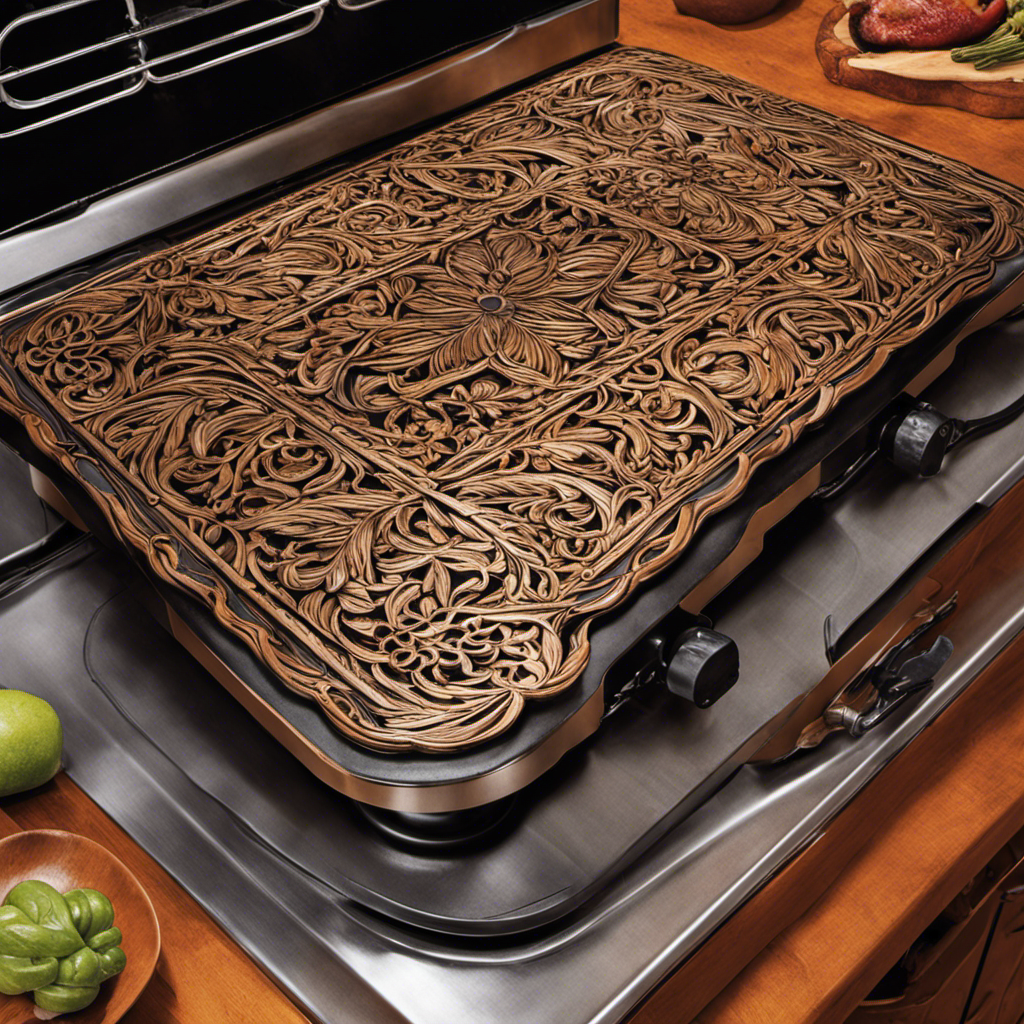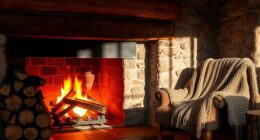
I have often thought about the amount of heat that a small wood stove can generate. It is impressive how such a compact item can efficiently heat up a space and make it feel cozy.
In this article, we’ll dive into the world of BTUs (British Thermal Units) and explore how they determine the heating capacity of a small wood stove. We’ll also discuss the factors that affect BTU output and how to choose the right BTU range for your needs.
So let’s get started and unravel the mystery of small wood stove BTUs.
Key Takeaways
- BTU output is an important factor to consider when choosing a small wood stove, as higher BTU output means more heat generated.
- Wood quality, stove design, and air flow control all affect the BTU output of a small wood stove.
- The BTU range for a small wood stove should be accurately calculated based on the size of the space and its insulation.
- Small wood stoves provide higher heat output compared to electric heaters and are more cost-effective than gas furnaces.
Understanding BTUs and Wood Stove Heating Capacity
I can’t believe how important it’s to understand the BTUs and heating capacity of a wood stove. When it comes to calculating BTU requirements, accuracy is key.
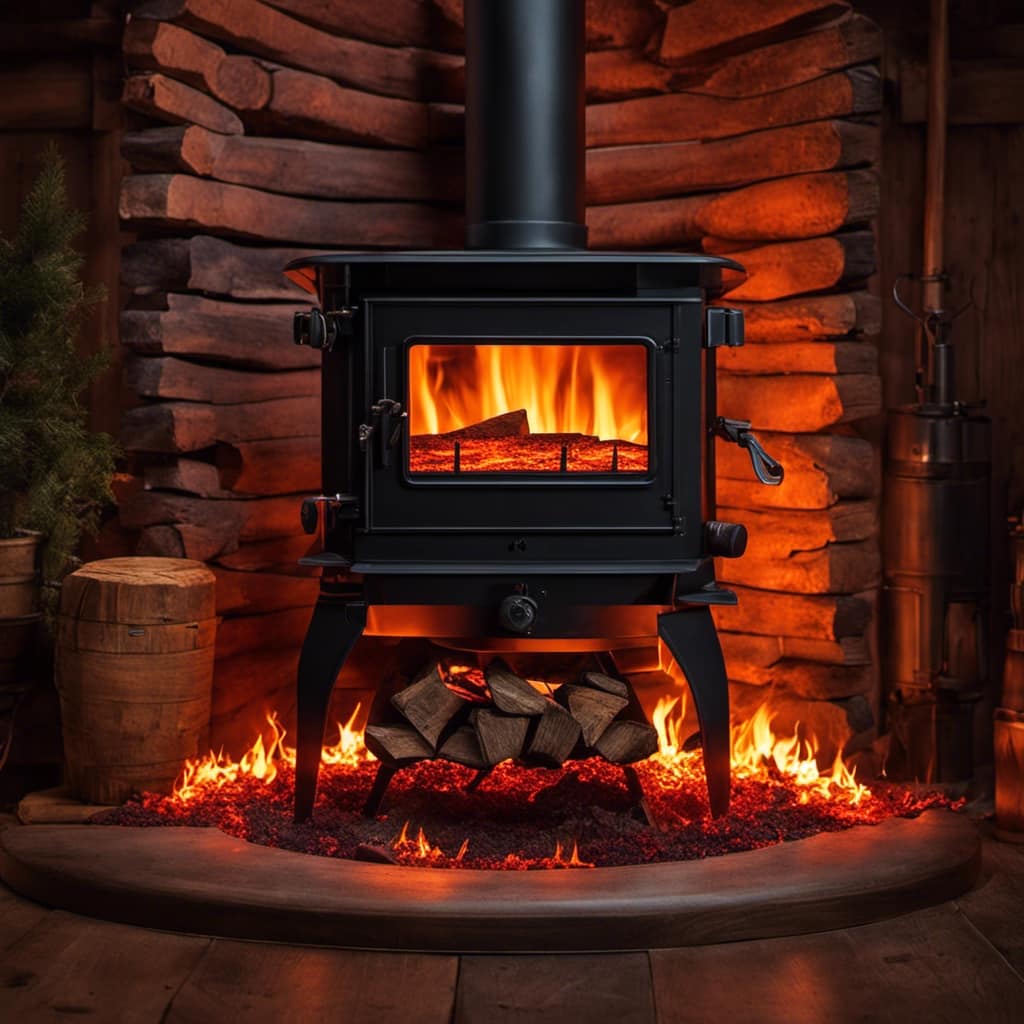
The BTU (British Thermal Unit) is a unit of measurement used to determine the amount of heat needed to raise the temperature of one pound of water by one degree Fahrenheit. By understanding the BTU output of a wood stove, you can ensure that it meets your heating needs.
Higher BTU output means a greater amount of heat generated, resulting in a more efficient and effective heating solution. This is especially beneficial in larger spaces or colder climates where a higher heat output is required.
Factors That Affect the BTU Output of a Small Wood Stove
Considering factors such as wood quality and stove design can significantly impact the BTU output of a small wood stove. To ensure that your wood stove provides sufficient heat for your space, it’s important to calculate the BTU requirements accurately.
Here are three factors that can impact the BTU output of a small wood stove:

-
Wood quality: The type and moisture content of the wood used can greatly affect the BTU output. Dry hardwoods, such as oak or maple, have higher BTU values compared to softwoods like pine. It’s crucial to use properly seasoned wood with a moisture content of around 20% for optimal heat output.
-
Stove design: The design of the stove, including the size and shape of the firebox, combustion system, and insulation, can influence the BTU output. Stoves with efficient combustion systems and well-insulated fireboxes tend to generate more heat.
-
Air flow control: Properly managing the air flow into the stove can impact the BTU output. Balancing the primary and secondary air supplies helps optimize the combustion process and heat production.
Determining the Right BTU Range for Your Small Wood Stove
To accurately determine the right BTU range for my small wood stove, I need to consider factors such as the size of my space and the insulation of my home.
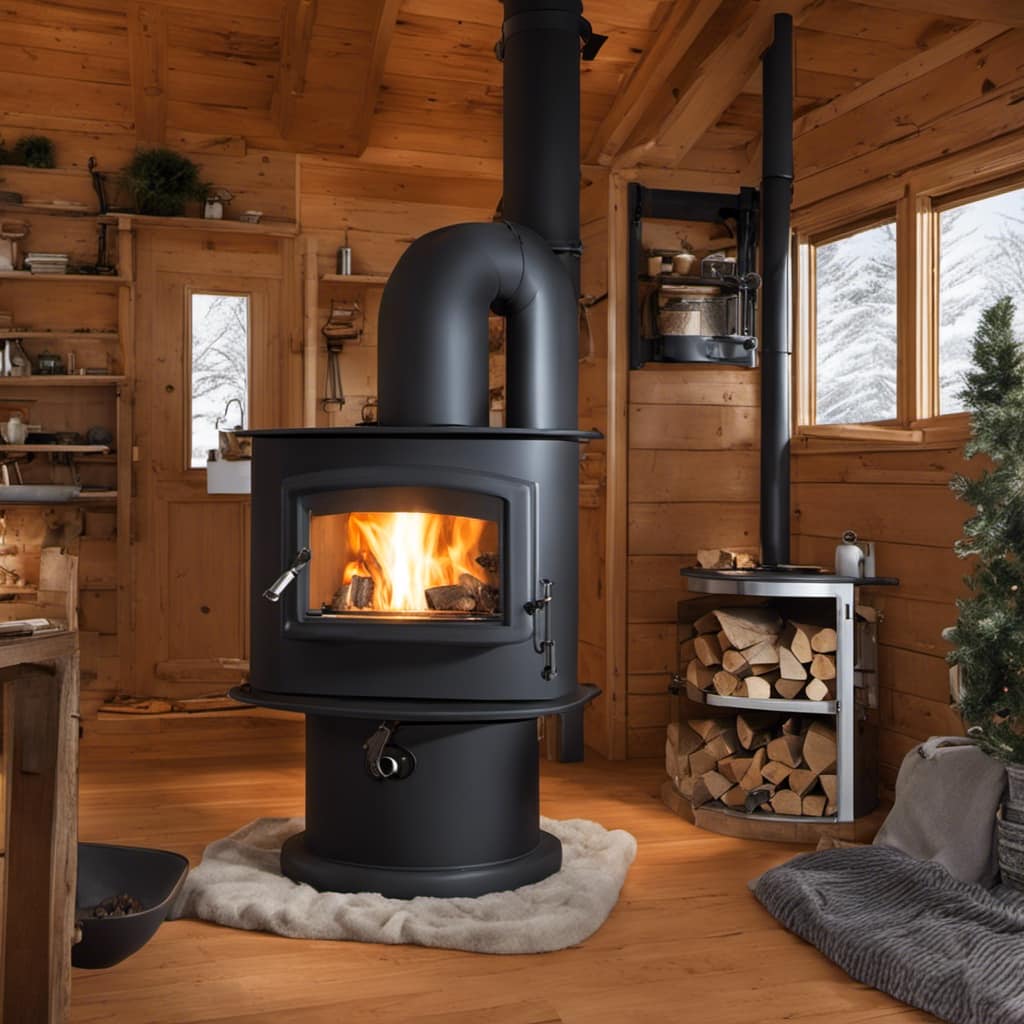
Calculating BTU requirements involves understanding the heat loss of your space. The size of the room or area you want to heat plays a crucial role in determining the BTUs needed. A larger space will require a higher BTU output to effectively heat it.
Additionally, the insulation of your home affects the heat retention. Well-insulated homes will retain heat better, requiring a lower BTU output. On the other hand, poorly insulated homes will have higher heat loss, necessitating a higher BTU rating.
Comparing BTUs: Small Wood Stove Vs. Other Heating Options
I compared the BTUs of a small wood stove and other heating options, and found that the wood stove provides higher heat output. When comparing the efficiency of a small wood stove to electric heaters, the wood stove comes out on top. It produces more BTUs per hour, ensuring a warmer and cozier environment.
Additionally, when evaluating the cost, a small wood stove is more cost-effective compared to gas furnaces. Wood is a renewable resource and can be obtained at a lower cost than natural gas. This makes the wood stove a more economical choice in the long run.
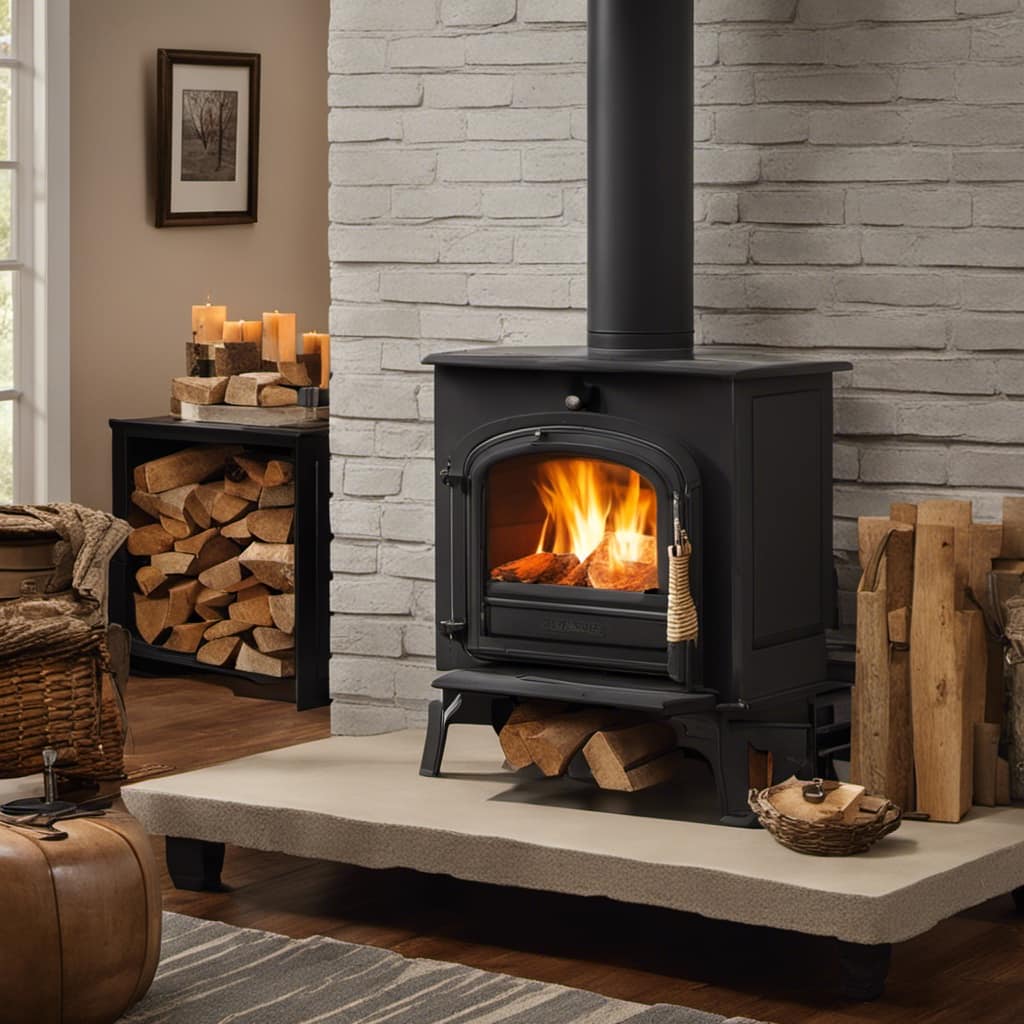
Transitioning into the next section, let’s explore some tips for maximizing the BTU efficiency of your small wood stove.
Tips for Maximizing the BTU Efficiency of Your Small Wood Stove
One tip for maximizing the BTU efficiency of my small wood stove is to regularly clean and maintain it to ensure optimal performance. This includes removing any ash buildup, cleaning the flue, and inspecting the stove for any signs of wear or damage.
Another important aspect is maximizing insulation in the area where the stove is located. This can be done by sealing any drafts or gaps around windows, doors, and walls, as well as adding insulation to the floors, ceilings, and walls.
Additionally, proper wood selection is crucial for maximizing BTU efficiency. Using dry, seasoned hardwoods such as oak or maple will provide a higher heat output compared to wet or softwoods. It’s also important to properly size and cut the wood to ensure efficient burning.

Frequently Asked Questions
Are Small Wood Stoves More Energy-Efficient Than Larger Wood Stoves?
Small wood stoves tend to be more energy-efficient than larger ones. They have a smaller heating capacity, which allows for better control over the amount of heat produced.
Can I Use a Small Wood Stove as the Primary Heat Source for My Entire Home?
Using a small wood stove as the primary heat source for an entire home can be a cost-effective and efficient option. However, it is important to follow small wood stove safety precautions to ensure safe operation and to maximize the benefits of using it for heating.
How Often Do I Need to Clean and Maintain a Small Wood Stove?
I clean and maintain my small wood stove regularly. For cleaning, I remove ashes and clean the flue. I also check the gaskets and seals for wear. Maintenance tips include checking for creosote buildup and inspecting the chimney.
What Is the Average Lifespan of a Small Wood Stove?
The average lifespan of a small wood stove depends on the quality of materials and maintenance. Regular cleaning and proper use can extend its lifespan. Additionally, energy efficiency plays a role in determining how long the stove will last.
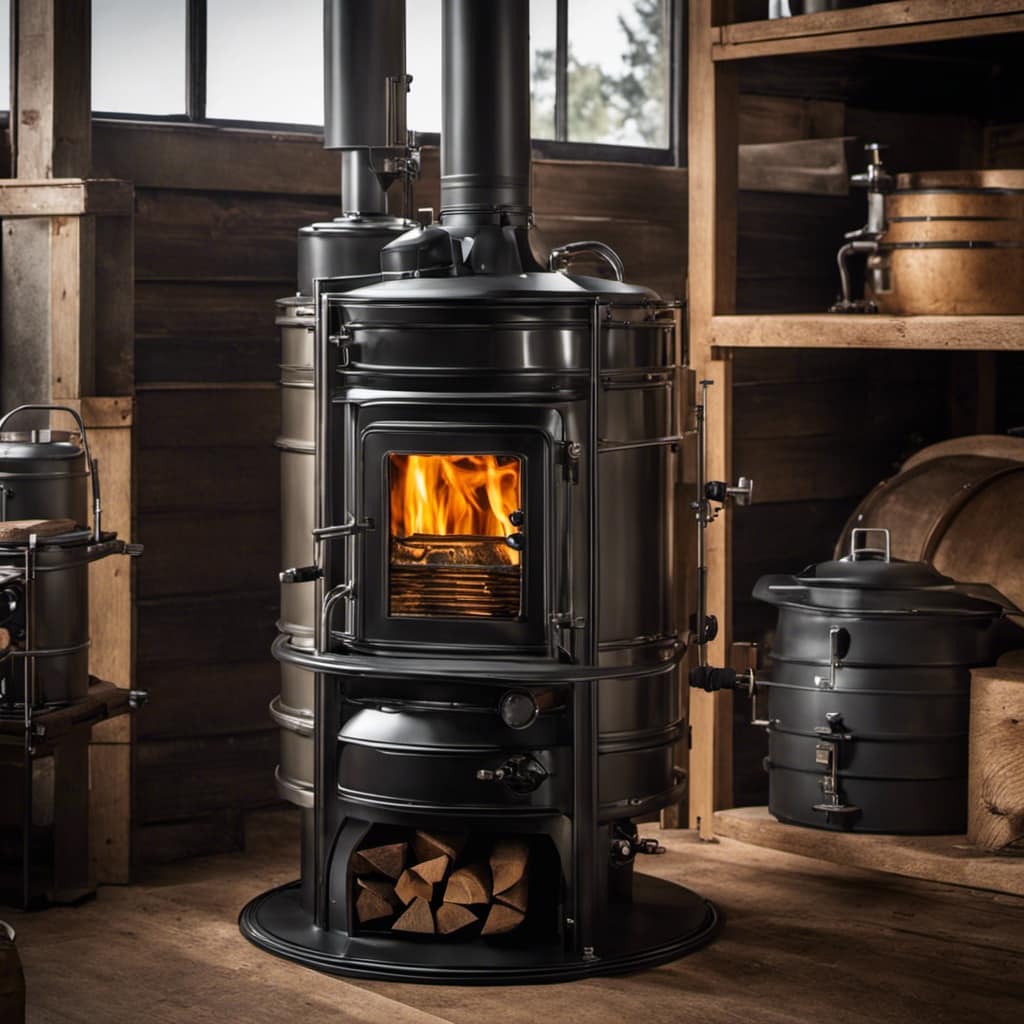
Can I Use a Small Wood Stove in a Mobile Home or Rv?
I can definitely use a small wood stove in my mobile home or RV. However, it’s important to prioritize small wood stove safety and follow proper installation tips for optimal performance and efficiency.
Conclusion
In conclusion, when it comes to determining the BTU output of a small wood stove, it’s crucial to consider factors such as stove size, efficiency, and fuel type. By understanding the BTU range that suits your heating needs, you can make an informed decision.
Comparing BTUs with other heating options can also help you gauge the efficiency of a small wood stove. Remember to follow tips for maximizing BTU efficiency to ensure optimal heat output.
Stay warm and cozy with your small wood stove!

Growing up surrounded by the vast beauty of nature, Sierra was always drawn to the call of the wild. While others sought the comfort of the familiar, she ventured out, embracing the unpredictable and finding stories in the heartbeat of nature.
At the epicenter of every remarkable venture lies a dynamic team—a fusion of diverse talents, visions, and passions. The essence of Best Small Wood Stoves is crafted and refined by such a trio: Sierra, Logan, and Terra. Their collective expertise has transformed the platform into a leading authority on small wood stoves, radiating warmth and knowledge in equal measure.






